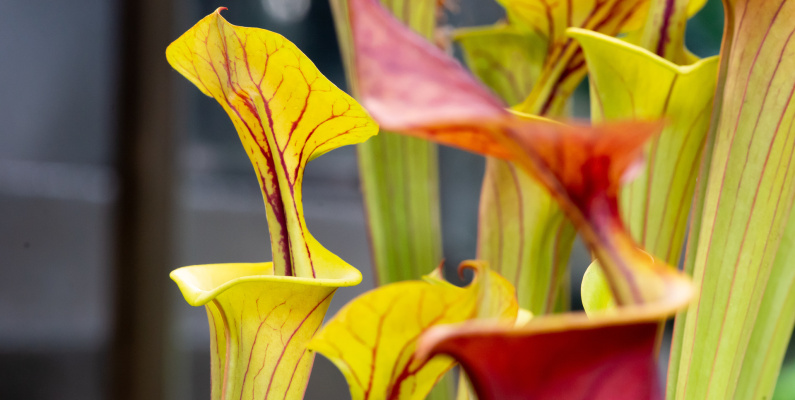
Tūhura has a display of carnivorous plants in the Tropical Forest! Carla de Boer, Otago Museum's Gardener, is here to tell you more about the evolution of these amazing organisms.
Predatory flowering plants capture the interest and imagination of all who see them, even Darwin is noted as being a fan – he wrote a whole book about them! – with an especially great admiration for the sticky sundews or Drosera, writing,“I care more about Drosera than the origin of all the species in the world” [1]
In fact, carnivorous plants are a wonder of evolution, having developed several clever ways to survive and thrive by attracting, catching, and digesting prey.
For many years, scientists thought that carnivorous plants must share common ancestry, but it turns out that carnivorous plants are a great example of convergent evolution (where the same features or structures develop in species unrelated to each other) with carnivorous traits evolving independently over six different times! [2]
The theory is that carnivorous traits have evolved repeatedly in plants in response to the stresses they face from the habitats they live in – generally bogs and swamps that have very poor nutrition. In these habitats, nitrogen, phosphorus, and other minerals are flushed out of the soil by the abundance of water, so the plants have adapted to get their nutrition elsewhere – by capturing the nitrogen and phosphorous from the dissolved bodies of their prey.

Image: Drosera binata, the fork-leaved sundew is a native in New Zealand and Australia. By Kane Fleury © Otago Museum.
Pitcher plants utilise a pitfall-like trap to capture prey, with a cupped leaf and a waxy, slippery, interior surface. Australian Cephalotus follicularis, Asian Nepenthes alata and American Sarracenia purpurea, are all pitcher plants that possess these features, but have each evolved independently to become carnivorous. [3]
Recent research of these species, through genetic analysis, has found that the evolutionary road to carnivory was strikingly similar for each of the three pitchers – showing that each had co-opted the same ancient proteins to create enzymes for dissolving prey! It’s amazing to think how convergence occurs right down to the molecular level. [4]

Image: Venus flytraps, Dionaea muscipula, in Tūhura's Tropical Forest. By Kane Fleury © Otago Museum.
Quick notes on growing your own carnivorous plants
- When growing carnivorous plants at home, feeding them insects is not necessary and can actually do more harm than good, instead focus on providing the right environment for a healthy plant – humidity, light, temperature, and moisture.
- Research your plant; find out where it’s from and what its natural habitat/conditions are.
- No matter how tempting, don’t touch your Venus flytrap. The plant uses energy to close and if there is no reward (a fly to eat) it can lead to your plant stressing, and stressed plants are unhealthy plants, prone to bugs, disease, and death.
Come along to Tūhura and visit our display to see some of these amazing plants for yourself!
Sources
1- http://blogs.evergreen.edu/pim-group1/charles-darwins-love-affair/
2- https://en.wikipedia.org/wiki/Carnivorous_plant
3- https://phys.org/news/2017-02-scientists-genetic-carnivorous-evolution.html
4- https://phys.org/news/2017-02-scientists-genetic-carnivorous-evolution.html
https://www.scientificamerican.com/article/how-plants-evolved-into-carnivores/
http://www.sarracenia.com/faq.html
https://www.carnivorousplants.org/cp/evolution/Nepenthes
